4:30am
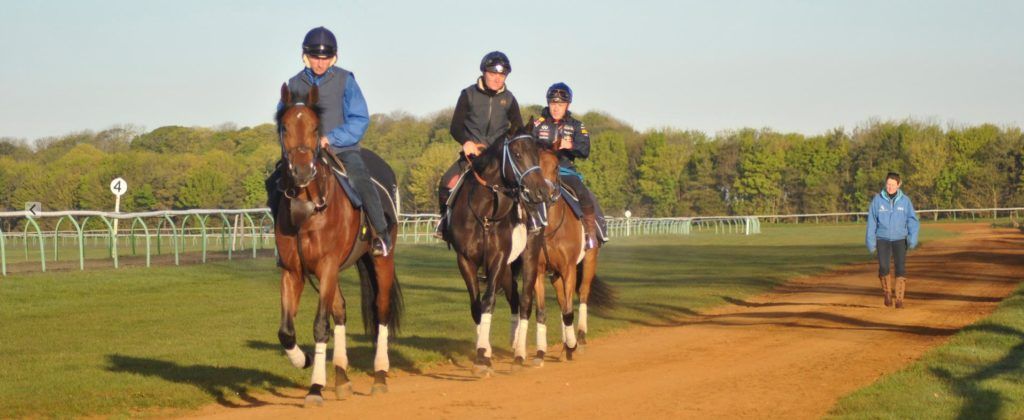
Do you ever people watch and notice the different ways people walk? If you do, you’ll see that walks can vary hugely between people…how they move their arms, if they’re one-sided, or how much up and down motion there is! Us equine professionals may be more guilty of this than most – after all, we’re used to assessing gaits for soundness and so on.
In a gait where there are so many variations in movement, one thing I always look for, in both humans and horses – is a purposeful walk. I believe it conveys a lot about the individual and so here are my thoughts on a purposeful walk in humans and horses…
Humans
There is one situation where a purposeful walk is a great indicator to me – conducting job interviews.
As an employer, one of the main characteristics I’m looking for is enthusiasm. So much can be taught, but attitude and enthusiasm have to be there already. When a candidate walks into the yard, they should be seeking to make a good first impression and having a purposeful walk is one thing that can make an immediate difference to the candidate’s body language and how they come across.
There’s no disputing that working in a racing yard is hard work and so you’ve got to have enthusiasm. If a candidate can’t muster that in a basic walk, at the point at which they’re trying to impress at interview – I’d be surprised to see any purpose or enthusiasm when they’re mucking out! There’s much to gain from a life in racing, it’s interesting, varied, exciting and there’s always plenty to learn. The prospect of landing a job in your chosen industry really should put a little bit of a spring in your step. I can understand nerves are a hindrance to many aspects of interview technique and I make allowances for that, but I do not believe nerves give you a lacklustre walk!
So, give me a purposeful walk and you’re halfway to the job. I need workers who see work as an opportunity, those who want to take work on, people I can delegate to confidently, who’ve got a sense of urgency about getting things done. I’m looking for people who show initiative and work well with the team. You don’t need to know everything, but you do need enthusiasm, a good attitude and to be willing to learn.
Horses
To some extent horses can be easier to read than humans! We’re well used to observing and making our own minds up in regards to how fit and well they might be feeling. You can use your instinct a lot more clearly with horses, whereas humans can alter your first impression or perspective with words!
In horses, the walk is very important. I believe an active purposeful walk demonstrates that the horse has the attitude to take things on and will ultimately be more enthusiastic about their day-to-day work. I usually assess the walk at three distinct stages where it’s of particular importance – purchase, training and at the racecourse.
When purchasing at the sales, the way the horse walks is one of the key factors for consideration and assessment. Large sums of money are invested and so assessing the walk properly is critical. Fortunately, a walk can tell you a great deal and is a very good indication of the way the horse will move in the other gaits. As a vet, I have an advanced awareness of gait analysis and personally, I look at the way the horse uses himself, his natural biomechanics, for fluidity of movement, good use of the back muscles and the hind legs coming through underneath with properly engaged hindquarters. Just some of the observations I make are – the natural nodding of the head, the carriage of the head, the swing through the body, the length of the stride (particularly the back feet), the range of movement in the shoulder, how level the hips are, muscle tone and development and the tightness of the muscles; and again I like the horse to look like he’s walking with some purpose.
I like to leave no stone unturned and for me, a purposeful walk is part of the day-to-day training of the horse. It’s part of the daily exercise routine and I assess the walk whenever possible. By this, I don’t mean just putting them on the horse-walker I mean using the walk to and from the gallops as part of the training. I like to see the horses with a strong, fluid, purposeful walk, with some urgency yet moving in a relaxed way. They need to be actively walking on, with engaged hindquarters and stretching the head down and using the back muscles properly. To train winners, you need horses that want to go forward, that want to take the work on, and a good marching purposeful walk in training reflects a good attitude to work in the horse.
Once at the racecourse – I make a brief assessment of whether the horse travelled well and how he’s feeling. In the parade ring, you obviously get a clear indication as to how on their toes they are and I’d be very surprised to see a horse that doesn’t have a purposeful walk with all the added excitement of the racecourse.
So, a purposeful walk is the main thing I look out for in horses and humans – and there’s a big tip for anyone interviewing with me! Like Bill O’Gorman says “this is not a rehearsal!”
I’m heading to the Guineas Breeze Up & Horses in Training Sale later this week on 3rd and 4th May. If you’re thinking of purchasing a horse and require any assistance from either a Trainer or Veterinarian perspective I’d be happy to assist you .

Guest post by: Dr. Cath Dunnett of Independent Equine Nutrition (IEN).
There are intrinsic contamination risks associated with horse feed and supplements which have in recent years been responsible for a series of post-race positives. Contamination of feed principally occurs due to the accidental introduction of an ingredient containing a naturally occurring prohibited substance. There are many stages in feed production and accidental contamination could happen at several stages, for example, contamination with weeds containing prohibited substances during the growth of cereal or other ingredients. Inadvertent contamination could also occur during harvest through the sharing of equipment or storage, or during cross-contamination during shipping or transport to the mill. There is potentially an increased risk of such contamination as a larger number of ingredients are sourced from across the globe and feed and supplement production becomes a worldwide operation.
Naturally Active Compounds
The feed industry takes the risk of contamination incredibly seriously and strategies have been implemented to reduce contamination risks from ingredients both produced at home and imported. Broadly the feed industry has a very good knowledge where the risks for contamination with prohibited substances lie, however, these can be complicated when additives such as herbs, spices, or plant extracts are used in feed or supplements. Here there are two key considerations – firstly, many plants naturally contain pharmacologically active compounds that could be considered as prohibited substances. Secondly, the country of origin may lack sufficiently thorough quality control systems.
The post-race positives due to morphine contamination of feed were reportedly due to poppy seed contamination of one or more ingredients. It may be a surprise to many that morphine-containing poppies had until recently been harvested in various locations around the UK, under a specific license and strict control and management, for the production of pharmaceuticals. A greater amount of morphine is found within the poppy seed head, whereas the seeds themselves contain only a very low level of morphine. It’s worth mentioning that the commonly seen red field poppies do not present a notable contamination risk, as they contain very low levels of morphine, if any at all.
Interestingly, in human food production, fragments of poppy seeds and heads do infiltrate the food chain. Yet, the European Food Standards Agency (EFSA) does not list morphine as an undesirable substance and there remains no minimum legal limit for morphine in human food.
Significant Physiological Levels In Racehorses
Whilst the potential for low residual levels of morphine in the food chain may be physiologically inconsequential to humans, it remains extremely problematic to trainers. Morphine is a significant analgesic and therefore must be regulated in a way that prevents its potential for abuse. Investigations into contamination might successfully conclude that any post-race positive test was as a result of feed contamination, however, it remains the case, that the horse has raced with a level of the ‘drug’ in its system.
Prohibited substance testing is incredibly accurate and a positive post-race result will be returned on minute levels. Whilst regulatory bodies over the world may choose to take a pragmatic view, nevertheless, there is no ‘official’ threshold for morphine in post-race samples in racehorses, therefore, a line must be drawn. For welfare reasons, there is no scientific evidence to allow us to determine an acceptable level where no physiological effect is confirmed.
Scheme Accreditation
The UK feed industry developed a quality assurance code as a risk management measure to reduce the risk of prohibited substances entering equine feed and to safeguard the interests of consumers and feed producers and suppliers.
The aim of any such quality assurance scheme is to understand where the risks lie within each part of the supply chain and then how to mitigate those risks. Here are a few areas where such a scheme can assist:
- Ensuring a long-term relationship with suppliers.
- Using an appropriately accredited manufacturing facility.
- Ensuring that everyone involved in the supply and manufacturing chain, including, farmers, harvest contractors, processors, hauliers, storage suppliers, trainers and stable staff understand the importance and the risks posed by prohibited substances and the consequences of minute levels of contamination.
- Encouraging collaboration between different manufacturers, so that concerns regarding ingredients or products, can be shared following analysis.
- Ensuring that marketing claims regarding prohibited substances are factual and not misleading.
Accredited companies are likely to be audited annually, to ensure their compliance with the scheme and that robust quality control systems remain in place to reduce the risk of contamination by prohibited substances.
Gathering Information
In addition to the efforts made by the equine feed industry, trainers themselves have a responsibility to understand the contamination risks and actively manage them. After all, it’s the trainer’s reputation and livelihood that is at stake. Trainers may receive some advice on this from their regulatory bodies and in the UK whilst attending the BHA trainer licensing course and any NTF seminars on the subject.
So far as is possible, trainers must be totally aware of the constituent parts of everything that is fed to their horses. This information is readily available, as it’s a legal requirement for companies to provide such details on the packaging.
Trainers would also be advised to enquire about the quality control systems that their manufacturer has in place to reduce the risk of contamination with prohibited substances. This could involve comprehensive risk assessments, raw material traceability and testing of both the ingredients and the finished product in some cases. Regardless of the size of the business, or their supply structure, all companies should have a robust system of traceability and quality control. For instance, my own company Racing Blue, follow a thorough quality control program in the manufacture of STORM ® Equus that includes every batch of each raw material and finished product being tested for a wide range of prohibited substances prior to release for sale.
Where a trainer uses a product manufactured abroad, sufficient questions of the importer/marketer should be asked, to ensure their processes match those in the home country. For instance, certain substances that are allowable in agricultural feed production in other countries, may be regarded a prohibited under the Rules of Racing in the home country.
Daily Management Procedures
It’s advisable for trainers to implement additional feed procedures in the yard, such as maintaining a comprehensive list of feedstuffs given to individual horses. This proves extremely useful should a post-race sample return as positive. Further to this, keeping an accurate record of delivery dates, batch numbers and invoices, as well as retaining a copy of all associated delivery notes and other paperwork, provides further evidence, if needed, to establish the route of contamination. Better still, retaining samples of each batch of feed and supplement for about 3 months is an excellent process to implement, as this is the period of time over which a post-race positive is possible and the consequent regulatory process will last. Representative samples of feed (500g) and a supplement (100g) should be stored in a sealed plastic bag and labelled with the product name, batch code and purchase date. Should an investigation be necessary, the record keeping along with the feed samples will provide vital evidence. Feed or supplement manufacturers should also retain samples for re-examination if a problem arises, however, it’s a sensible precaution for trainers to do the same.
Quality control processes and accreditation schemes have brought considerable benefit to the racing industry, however, historical positive cases with morphine and other substances demonstrate that accidental contamination can still happen, and there are always further improvements that can be made. Equally however, trainers have a pivotal role and must ensure they keep informed and up to date, so that they’re able to make the best possible feeding and feed management choices.
You can find out more about feed analysis on the IEN website.
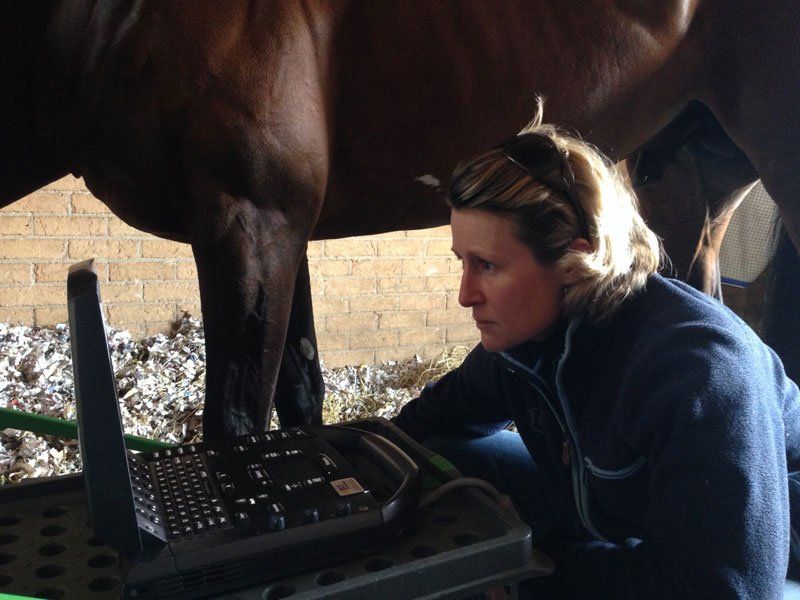
All businesses want a unique selling point (USP). However, with around 400 licensed flat trainers in the UK and as with market competition in any industry – finding, retaining or even explaining a USP can be tough!
IGL Racing has an immediate USP – that I’m the only female trainer that’s also a qualified vet in the UK. Horses under my training and subsequently their owners, benefit from having a vet on site 24/7. Through my veterinary experience, I’ve developed an advanced knowledge and awareness of soundness and wellbeing; which means I can often prevent an injury by spotting a potential problem in the early stages. This has obvious immediate benefits to the welfare of the horse, along with benefits to the owner both financially in reduced vets bills and in terms of their enjoyment; as their horse stays fit and well and able to race more regularly.
Having an obvious USP is quite rare in today’s competitive marketplace; yet being unique is about more than just one statement of fact – it goes beyond that. We’ve all taken a unique course and have grown through a unique set of experiences to get to who we are and where we are today. Uniqueness as a racehorse trainer is really about the combination of your skills, knowledge and experience and how this distils down into your approach to training.
Here are 6 points that I believe combine to make IGL Racing unique…
#1 Innovation
In both training and business, I believe in marginal gains, taking every opportunity, evolving and innovating. I’m driven to think differently, cover all the bases and experiment with new methods. The marginal gains approach looks at making constant improvements, however small, across every element of training. It’s often the little things that make a big difference with racehorses, particularly to how they feel within themselves, for example, some fresh grass or a bit of freedom in the paddock. We look at every element of training, nutrition, stabling, equipment, air quality, transportation and more!
#2 Ambition
OK, so having ambition is not unique, particularly in racing! However, I have big ambitions and from my early days as an apprentice jockey in Germany, my aim was always to become a trainer. Over the years, I’ve purposefully gained a wide range of experiences, knowledge and qualifications, including working as a vet and learning natural horsemanship, in order to develop a deep understanding of the horse and provide a solid foundation as a trainer.
My mission now is to train winners. The horses I have in training at the moment are a solid start to this ambition. I have the capacity at Saint Wendred’s and look forward to growing the number of horses in training and gaining momentum on the racecourse with an increase in runners.
#3 Excellence
Racing itself is the pursuit of excellence. The thoroughbred racehorse is a result of centuries of breeding and can be thought of as the ultimate pursuit of excellence. I have always striven for excellence, for both myself and my training operation. I’m determined to continue going that extra mile in the pursuit of excellence.
#4 Approach
My training approach combines both tradition and innovation, veterinary science and natural horsemanship. I incorporate diagnostics and scientific measurements to support my horsemanship knowledge and of course am always on-hand with veterinary knowledge when needed. The horses benefit from this, as it ensures they are monitored at every possible point. Here’s just some of the science supporting my training… cryotherapy, pulsmagnetic therapy, GPS, nutritional supplements, hay steamer and the new ComfortStall rubber matting system.
#5 Welfare
Saint Wendred’s is a bespoke, purpose-built yard, with excellent training facilities in Newmarket. It allows me to fulfil my first and foremost priority – the horse’s welfare. I’m dedicated to the wellbeing of the horses in my training and make sure each one is cared for and trained as an individual, with a routine tailored to them. There’s no ‘one size fits all’ approach here. I think it’s really important that they get time to “be a horse” and so make sure they have time in the paddock whenever possible. I’ve even been known to hand-pick and deliver grass to the stable door!
#6 Communication
Training isn’t just about the horses, it’s a business venture that relies on relationships both horses and humans! Our relationship with owners and potential owners is pivotal to success and owner experience is of paramount importance to us. We’re a small, dedicated team and we welcome owners wholeheartedly and look forward to them quickly become part of our team. We do our utmost to offer the personal touch and place great importance on communication to ensure our owners are fully involved and up to date with their horse’s development, training and racing career.
Find Out More…
If you’d like to find out more about IGL Racing, or how to become a racehorse owner, feel free to contact me today, I’d be more than happy to have a chat. Meanwhile, I’ve composed a comprehensive guide on becoming a racehorse owner which is available for download below…just click on the image and enter your name and email address and I’ll send it straight to your inbox.
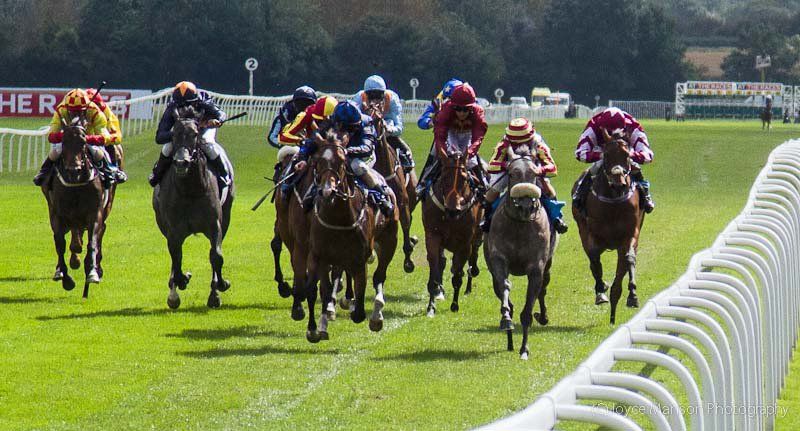
Racing is a dynamic sport and a vibrant industry and there can be a lot to get to grips with, ranging from equine knowledge, to an understanding of the sport itself, and commercial opportunities and connections. So if, like many people, you’re dreaming of owning a racehorse or even a string of racehorses, there are a few important considerations and decisions to work through as you get underway and take your first steps towards ownership.
Average Costs
Firstly, you need to understand the average costs of keeping a racehorse in training, so that you don’t have any surprises and you can make ownership decisions in accordance with your financial situation.
An ROA survey of ownership costs in 2015 found that the annual average cost of a Flat horse in training was £22,595. This included costs, such as, training fees, gallops, farrier, transport, vets, entries, jockeys and registration fees.
Ownership Type
With these average costs in mind, you need to consider the type of ownership that’s most suitable to your financial circumstances and the ownership experience you’re seeking. There are a number of different ownership options available, where you either own as an individual, company or group. Each type of ownership is different in numerous ways and here’s a quick run-down of the main options…
Sole Ownership
This is where you purchase and own a horse outright and are responsible for the associated administration. You’re also liable for all the costs and will receive all of the owner’s share of prize-money.
Company Ownership
Registering your company as an owner allows you to take advantage of unique branding opportunities – your silks can match your brand colours and you can sponsor your horse, so that your logo is displayed on your silks. With company ownership you purchase your horse, retain full ownership, your company is responsible for all the costs and receives all of the owner’s share of prize-money.
Group Ownership
As a co-owner you’ll share your horse with a group of like-minded people whilst significantly reducing the expenses associated with ownership, as all costs are divided amongst the owners. There are three main types of group ownership…
#1 Partnership
All partners are registered owners with the BHA and have a percentage share of the horse. On sale of the horse, you’d receive proceeds equivalent to your percentage share. You’re responsible for your percentage of the costs and will receive your percentage of the owner’s prize-money.
#2 Syndicate
Shared ownership where only the syndicate manager needs to be a registered owner with the BHA. They also handle all the administration. Check each agreement for details, such as:
-
- Who owns the horse (and receives any proceeds of sale).
- How prize-money is distributed, who to and when.
- The length of the agreement.
#3 Racing Club
Run by racing managers, clubs are monthly or annual subscriptions offering shared ownership. These are different to partnerships and syndicates in that the club itself owns the horse, not the members and therefore the club managers receive any proceeds from the sale of the horse. There are often many members, sometimes hundreds, if not thousands. You may get a proportion of the prize-money, but do not expect it to cover your costs.
Make sure you check the details in each agreement for group ownership as they do vary.
Your Trainer
Your choice of trainer is pivotal. They can make the whole experience for you. If you’re new to horseracing you’ll need the support and guidance of your trainer on certain matters throughout the whole experience. So you need someone you can go to, who’s got time for you and who’s happy to help.
Communication is essential. Beyond the day-to-day training of your horse, which is of course the central role of a trainer, their communications to you are paramount to your enjoyment and to making you feel a valued part of the team. If you try and find someone you personally like, you’ll naturally appreciate their communication style.
Further to communication style, you need to consider any other attributes you’d like in a trainer…are you looking for someone innovative? Maybe, someone with varied experience and depth of equine and racing knowledge? Perhaps, someone with a particularly strong equine welfare focus? Most trainers have a website which enable you to get a very clear idea of this kind of information in order to create a short list. After which, the best way to get your questions answered and to get a feel for whether you like them (or not!), is to get in touch and arrange to have a chat.
Your Horse
When joining a partnership or syndicate, the trainer and horse often come as a package. As your trainer will already have a selection of horses with shares available and you can choose the one that appeals to you the most.
As a sole owner you may already have a horse, or you might like to go to the sales with your trainer and experience the unprecedented thrill of purchasing your horse at auction. Your trainer would be more than happy to attend with you, view horses and offer their wealth of advice and knowledge on how the whole process works, the attributes of each horse, and help you make the right decision, at the right price.
Administration of Your Ownership
There’s a quite a bit of administration involved in ownership and if you’re new to racing it can take some time to work through. To give you an idea of the basic admin involved, you need to – register as an owner, register your colours, set-up your racing account, name your horse (if not already named) and register an authority to act. You should also – register sponsorship and register to reclaim VAT.
Therefore, it’s worth considering the extent to which you’d like to be involved in the administration side of ownership. By opting for a partnership, syndicate or racing club, you can avoid the majority of the administration as it’s handled by the trainer or manager, removing the hassle and freeing you up to enjoy your ownership that much more.
Get In Touch
Here at Gansera-Lévêque Racing your experience of racehorse ownership is central to us. We offer both sole and group ownership options to allow you the most freedom possible in choosing the best ownership option for you. We do our utmost to offer the personal touch, ensuring each owner is fully involved and up to date with their horse’s development, training and racing career.
If you have any questions at all on racehorse ownership or would like to discuss how to go about becoming an owner, please feel free to contact me – I’d be more than happy to talk it through. Alternatively, you can find out more by downloading my ‘Guide to Becoming a Racehorse Owner’ below…
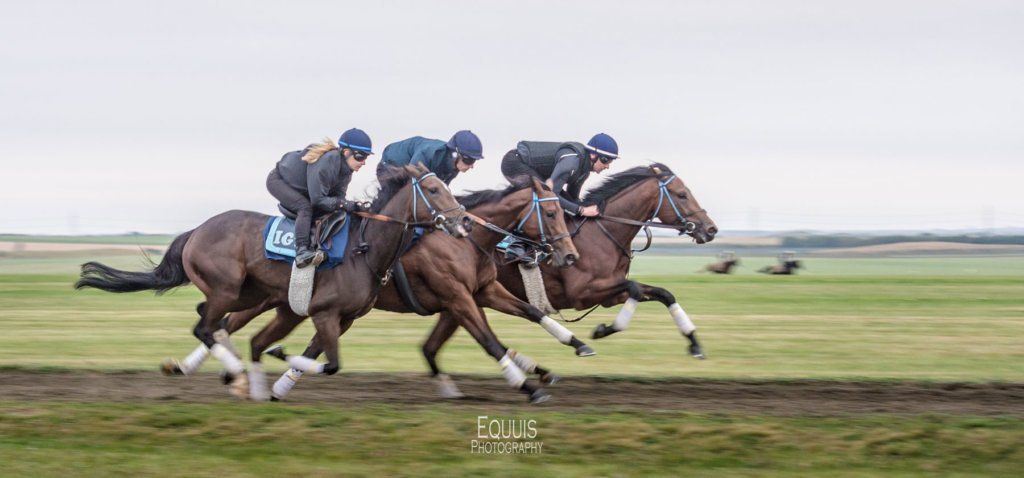
Selecting a trainer is one of the most important decisions you can make as a racehorse owner, right up there with choosing your horse. There are a number of factors you might take into consideration as you ponder your choice:
- Location – you’ll be visiting the yard often, so you might like to consider where’s easiest for you to get travel to, or which area you’d enjoy visiting the most.
- Personality – you’ve got to ‘gel’ with your trainer, if you don’t ‘get’ them, it’ll be less enjoyable and eventually you may rub each other up the wrong way!
- Communication – each trainer communicates differently and it’s important you find someone that communicates well and makes you feel part of the team.
One other crucial factor to consider is the ownership experience you’re looking for and often the size of the yard can have a strong bearing on this.
Should you choose a big yard or a bespoke yard?
It depends on your personal preferences – do you want to be a vital part of a focussed hard-working team striving for success, or do you want to be a small part of a big machine?
People sometimes gravitate towards the bigger trainers due to their well-established record, or due to the prestige associated with them – but here are 11 reasons to choose a bespoke training yard over a big operation…
#1 It’s A Journey!
It could be said that choosing a bespoke trainer is really immersing yourself in horseracing. You can experience the highs and lows of racing with a bespoke trainer who’s truly with you every step of the way.
#2 Sense Of Achievement
Much like working your way up in life, you feel a greater sense of achievement if you’ve done it on your own efforts and achievements, rather than getting a leg-up from someone else.
Sending your horse to a bespoke yard, gives you the immense pleasure of working your way up with them, the achievements you attain together are deserved, cherished and reached through teamwork and dedication. This gives you, as the owner, a greater degree of satisfaction as you’ve had a greater input into the success of your horse and the yard.
#3 Personal Service
Aside from the training of your horse, bespoke yards are able to absolutely ensure that you get a personal service. Even tailoring the way they communicate with you and making sure you’ve got all the information you need in a way that works for you. You receive more one-on-one contact and an all-around more personalised service.
#4 Bespoke Training
As a lean operation bespoke yards are able to swiftly tailor the training method around each horse’s individual needs, to get the best out of them and to ensure soundness and wellbeing of your horse as a priority. With bespoke trainers each horse is given the same care, consideration and importance, after all losing a horse means losing an owner which is critical to the bespoke trainer’s business.
#5 Enhance Your Experience
With a horse in training with a bespoke trainer you’ll experience the thrill of attending the racecourse to watch your horse run more often. Bespoke trainers work to ensure that your horse reaches his potential through planning the best possible racing career, whereas, unfortunately the big trainers aren’t always able to do this, as it’s just not really practical or possible to do so. Bespoke trainers are ultimately in a better position to be able to manage your horse’s career and provide you with a more fulfilling, immersive and varied experience.
#6 Join A Team
As an owner in a bespoke yard you really do become a fundamental part of the team. You strive for success and excellence together. Your support and the decisions you take together on the career of your horse contribute greatly to your achievements and success as an owner and that of the yard.
#7 Become A Friend
You walk into a bespoke yard and the whole team knows who you are and how you like your tea, you’re welcomed as a friend. Bespoke trainers are naturally closer to their owners, whereas often it’s just not practical for big trainers to deal with everyone and so you get delegated out to someone else.
#8 Make A Difference
As an owner in a bespoke yard you can make a real difference to the lives and fortunes of other people. Everyone in racing works hard, no one is looking for a free ride, however, all yards need owners to send them horses to survive as a business. Without you, businesses fail, dreams are broken and unemployment rises. Sending your horse or horses to a bespoke yard makes a massive difference to very hard-working people in the industry. You are the pivotal factor that turns the team’s fortunes on its head. This might sound a little dramatic, but it’s true!
#9 Support The Industry And Encourage Diversity
Sending your horses to a bespoke yard is beneficial for the industry and the sport as a whole. There needs to be diversity to even make it a sport! It would be less of a sport with only a few large training operations competing against each other. Much like the supermarkets and the independent shops on the high-street, if owners don’t use bespoke trainers, they’ll disappear.
As often is the case, horseracing operates a few years behind the trends – local is the new global has been a trend for a long time…it’s time it came to racing. The proven method of reviving local communities is to encourage and support small independently run businesses and shops, and this seems to apply perfectly to the sport of horseracing.
The industry and the sport wouldn’t want to lose the diverse personalities and inspirational stories wrapped up in the strivings of the bespoke training operations and so the diversity of the trainers needs to be supported and preserved. Owners who send their horses to bespoke trainers are imperative to the sport.
#10 Support Ambition
Bespoke yards are never lacking in character or ambition. They’re driven by the same competitive spirit as any of the larger operations. Everyone started somewhere and bespoke yards continually look for every opportunity and work hard to get ahead. But like any business, they cannot do it alone and require the support of owners to fulfil their ambitions.
#11 Quality Over Quantity
Racing is clearly a numbers game in many ways and anyone could do well with hundreds of horses! Maths would suggest that a certain amount of them would be good horses. However, bespoke trainers keep their numbers low and endeavour to improve the quality of their horses over time.
There are likely many more reasons to choose a bespoke trainer over a large yard, I’d love to hear them if you can think of any more. Meanwhile, if you’d like to find out more about racehorse ownership you can download my comprehensive ‘Guide To Becoming A Racehorse Owner’ below or contact me to arrange a chat.
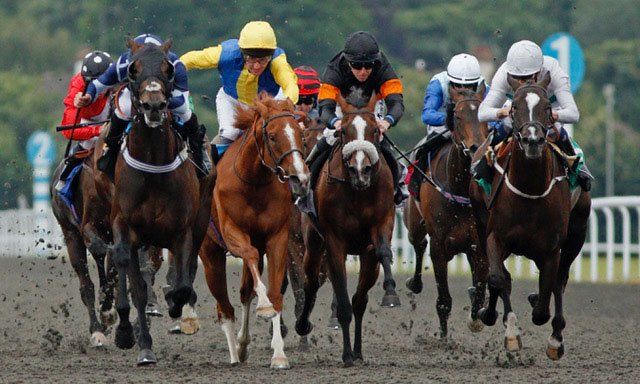
There are so many reasons to become a racehorse owner and because of this our unique sport attracts a wide-range of people with different interests, whom all come together to enjoy the extraordinary experience of horse racing. Although often considered a privilege of the very wealthy, racehorse ownership is more affordable and accessible than ever, with a form of racehorse ownership to suit most budgets.
Just some of the more frequent reasons people become involved in racing are:
- A love of horses and a desire to learn more about them and their training.
- The social aspect – the chance to meet like-minded people, with a shared passion, to enjoy a great day out with new and old friends and to joyfully attend the numerous social events organised by your trainer.
- A love of racing – some people love the sport itself, trying to fathom and master the different elements involved in producing a top horse. Ownership provides you with behind the scenes access and the ability to learn much from your trainer, such as the intricacies of racing, breeding, feeding, race tactics, race planning and much more.
- Others are drawn to the numbers game – the handicaps, ratings and betting odds.
- Some are drawn to the historic nature of the sport and the traditions.
- UK racing in particular appeals to people attracted to the prestige, the chance to go to the high-end races, for example, Royal Ascot and rub shoulders with high profile owners such as Her Majesty the Queen.
- For some people, it is the business aspect of the horse racing industry which is most intriguing.
Whatever your reason for getting involved, one thing’s for certain…you’ll make memories that will last.
Ownership gives you a wonderful opportunity to not just watch racing, but to participate and to be actively involved with racing, on the inside. It’s a fantastic way to immerse yourself in horse racing. When you become a racehorse owner, you become an extremely important member of a fascinating sport, industry, social network and part of a dedicated team working towards a joint goal and striving for success.
If you want to find out more about how to go about becoming a racehorse owner, I’ve put together a comprehensive and informative guide to help answer your questions and you can download your copy here…
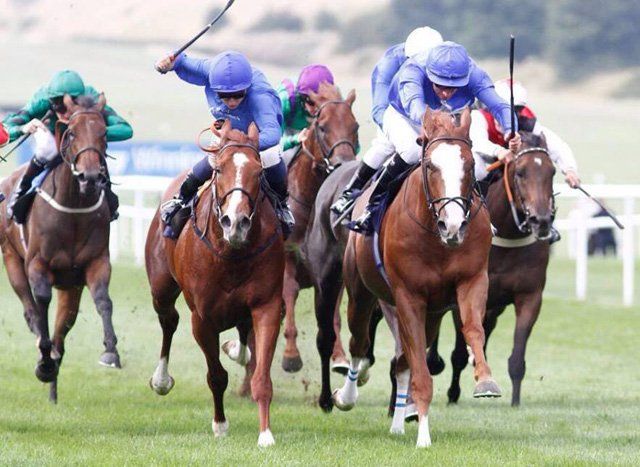

Last week we were lucky to benefit from on site work rider training for our staff.
The British Racing School
Jockey coach Richard Perham came to Saint Wendred's with a specially
designed mobile training centre including a racehorse simulator. Mr.
Perham rode over 230 winners in his career as a jockey, and has now gone
on to coach many of the best jockeys currently riding in England today.
He will be joining the very best in the world of horse racing by being a
key speaker at the Sheik Mansoor Festival
held in Abu Dhabi in November, we are looking forward to hearing his opinions on the future of jockey coaching and race riding.
Mr. Perhams' advice was well received by our new work rider Pauline who
despite attending the top racing school in France had never had the
benefit of using a moving horse simulator.
Much of the emphasis of the session was on balance and getting the jockey to think about how every tiny movement that they make can be felt by the horse underneath. On the simulator, strength and endurance were worked on with getting the jockey to rest for 30 seconds in a normal cantering position followed by 30 seconds of a lower position like is used to quicken when riding faster work.
For my marginal gains philosophy, the quality and continual training of my riders is extremely important. A good 'pilot' rather than a 'passenger' can make a huge difference in the training and education of our racehorses.
On behalf of all of us at Gansera-Lévêque Racing, thank you to The British Racing School and to Mr. Perham for delivering such great training to our riders on our doorstep.
Click the video below to watch a clip of Pauline's training...

Having companies like Haygain & Racing Blue on board with us fits with my marginal gains philosophy – we pay attention to every detail and always make every small improvement possible to try to achieve the best results…
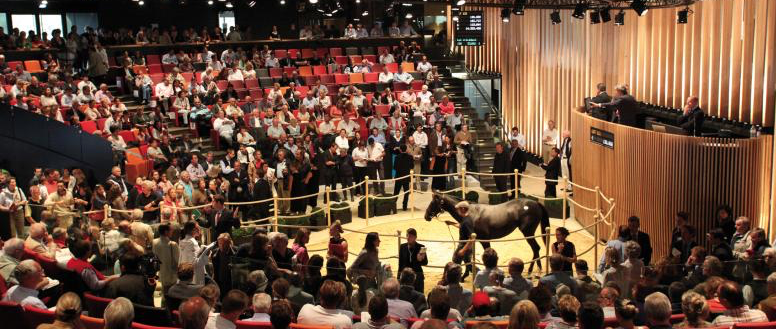
Yearling auction catalogue – 14th-16th August 2016
As the Deauville sales are the first major yearling sales in Europe, a
large crowd always arrives to see the years offering from some exciting
new stallions. This year will be no exception with the first yearlings
of Group 1 winning stallion MAXIOS
going through the ring. One of his first crop of yearlings to sell will be Ilka and Stéphane’s homebred filly TENACITY (ex. TOSCA
).
It will be exciting to see who her purchaser will be and how she and the
other MAXIOS offspring will fare in their racing careers.

Thoroughbreds
Ilka: +44 (0)785 553 2072Arabians
Stéphane: +44 (0)7981 772 715
Stéphane: +44 (0)7981 772 715
RACEHORSE TRAINERS
Saint Wendred’s
Hamilton Road
Newmarket CB8 7JQ
United Kingdom
Gansera Leveque | All Rights Reserved

